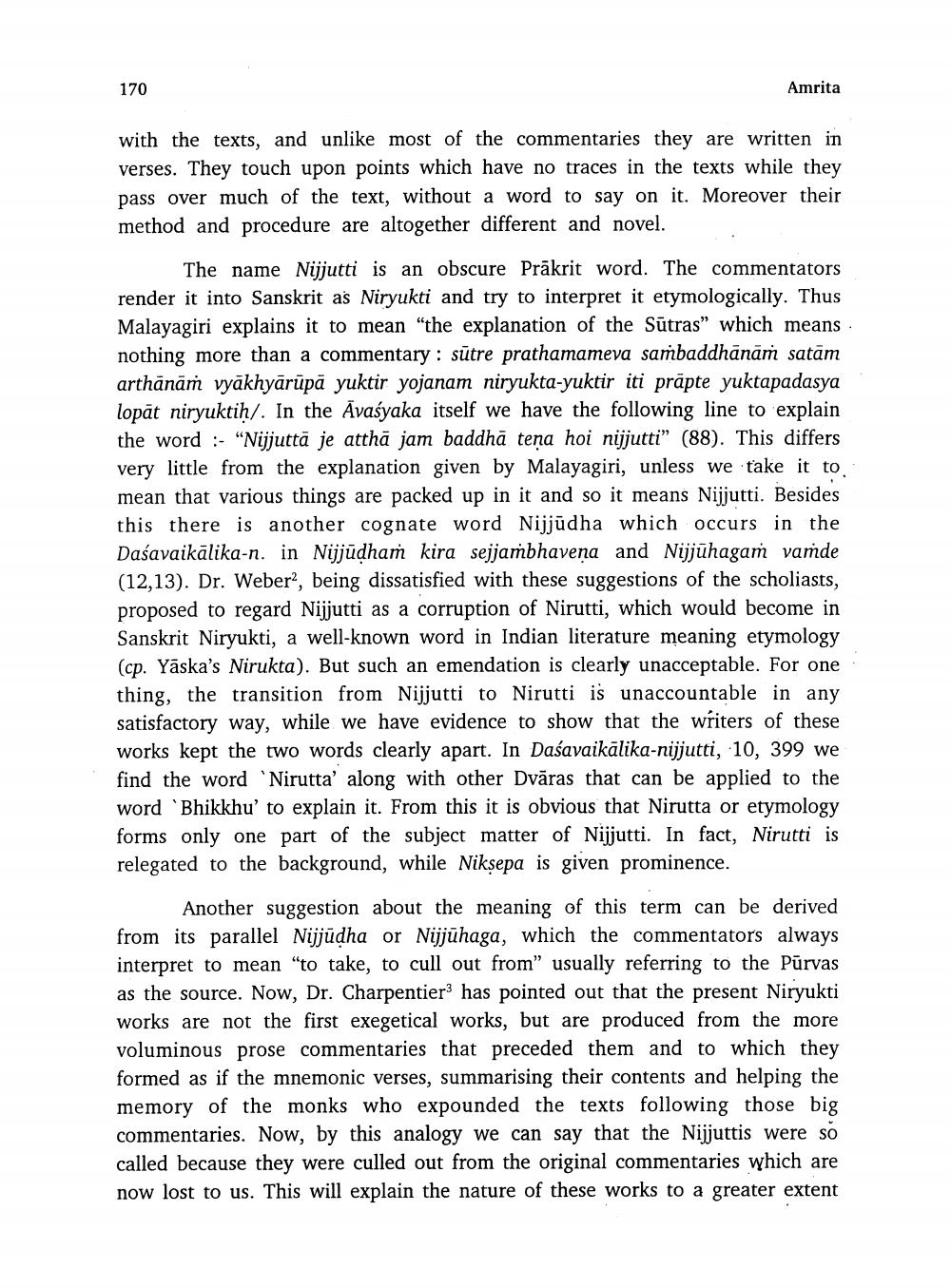________________
170
Amrita
with the texts, and unlike most of the commentaries they are written in verses. They touch upon points which have no traces in the texts while they pass over much of the text, without a word to say on it. Moreover their method and procedure are altogether different and novel.
The name Nijjutti is an obscure Prākrit word. The commentators render it into Sanskrit as Niryukti and try to interpret it etymologically. Thus Malayagiri explains it to mean "the explanation of the Sūtras” which means nothing more than a commentary : sūtre prathamameva sambaddhānam satām arthānām vyākhyārūpā yuktir yojanam niryukta-yuktir iti prāpte yuktapadasya lopāt niryuktih/. In the Āvaśyaka itself we have the following line to explain the word :- "Nijjuttā je atthā jam baddhā tena hoi nijjutti” (88). This differs very little from the explanation given by Malayagiri, unless we take it to mean that various things are packed up in it and so it means Nijjutti. Besides this there is another cognate word Nijjūdha which occurs in the Daśavaikālika-n. in Nijjūdham kira sejjambhavena and Nijjūhagam vamde (12,13). Dr. Weber, being dissatisfied with these suggestions of the scholiasts, proposed to regard Nijjutti as a corruption of Nirutti, which would become in Sanskrit Niryukti, a well-known word in Indian literature meaning etymology (cp. Yāska's Nirukta). But such an emendation is clearly unacceptable. For one thing, the transition from Nijjutti to Nirutti is unaccountable in any satisfactory way, while we have evidence to show that the writers of these works kept the two words clearly apart. In Daśavaikālika-nijjutti, 10, 399 we find the word 'Nirutta' along with other Dvāras that can be applied to the word ‘Bhikkhu' to explain it. From this it is obvious that Nirutta or etymology forms only one part of the subject matter of Nijjutti. In fact, Nirutti is relegated to the background, while Niksepa is given prominence.
Another suggestion about the meaning of this term can be derived from its parallel Nijjüdha or Nijjühaga, which the commentators always interpret to mean "to take, to cull out from” usually referring to the Pūrvas as the source. Now, Dr. Charpentier has pointed out that the present Niryukti works are not the first exegetical works, but are produced from the more voluminous prose commentaries that preceded them and to which they formed as if the mnemonic verses, summarising their contents and helping the memory of the monks who expounded the texts following those big commentaries. Now, by this analogy we can say that the Nijjuttis were so called because they were culled out from the original commentaries which are now lost to us. This will explain the nature of these works to a greater extent




